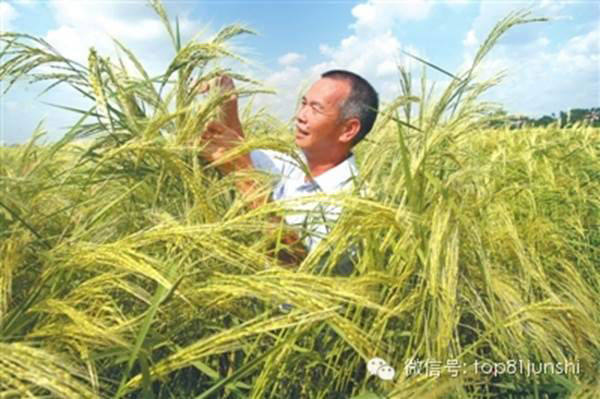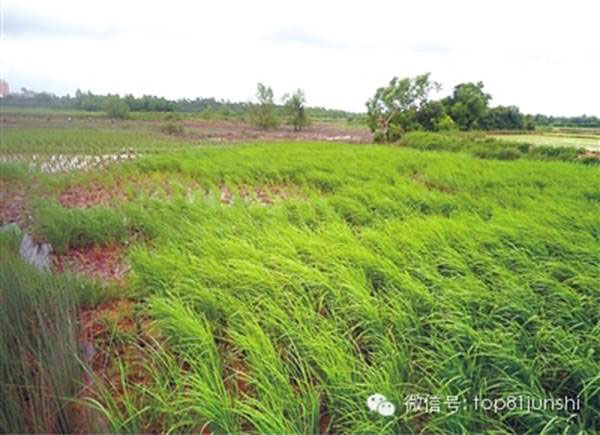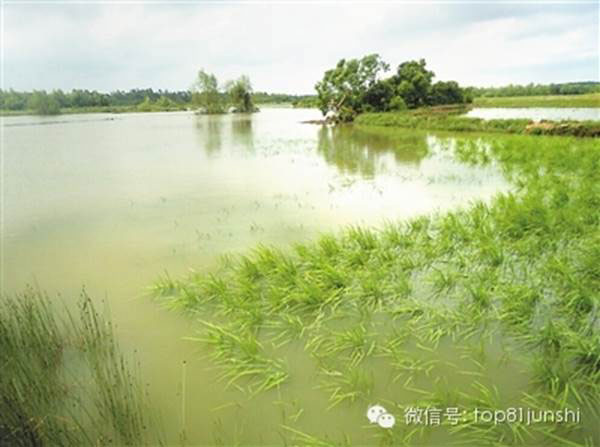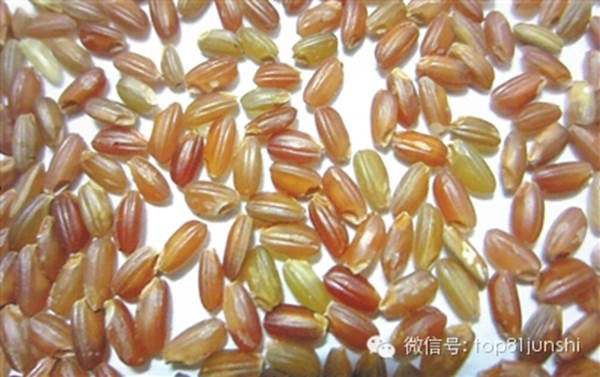Overnight China has turned from an exporter of grains to a major importer, can the world feed China? Solutions are at hand with a new cultivar of rice that thrives on seawater. Prof Li Kangmin
Lester Brown, president of the World Watch Institute wrote an article entitled “Who will feed China?” in 1994, which was reprinted on the front page of the Washington Post’s Outlook section with the title “How China Could Starve the World”. It unleashed a political firestorm in Beijing. Wan Baorui, Deputy Minister of Agriculture announced China’s official disagreement with the analysis. He claimed that by 2025 China would nearly double her grain production and would have no trouble satisfying the increasing food needs. Hu Angang, a research fellow with the Chinese Academy of Sciences pointed to the dramatic gains in grain production since the founding of New China in 1949. Although he accepted the projection of the grain demand as population grew and incomes climbed in future, he rejected Brown’s much less bullish outlook for grain production. China had an enormous potential for expanding her grain harvest and Brown was underestimating it.
In early February 1995, Lester Brown attended the sustainable development conference in Oslo, Norway. After Brown left for Stockholm, Xie Zhenhua from the Chinese embassy in Norway asked for the floor even though he was not a scheduled speaker. He claimed that Brown’s analysis was misleading, saying, “We are giving priority to agricultural productivity. Our family planning program has been very successful. Science and technology and economic growth will see us through.” In concluding, he repeated the question, “Who will feed China?” and then solemnly replied, “The Chinese people will feed themselves.” Next morning, Xie held a news conference, pointing out “unequivocally that China does not want to rely on others to feed its people, and that it relies on itself to solve its own problems.”
However, Brown’s analysis and projections were not out of the blue. He had noticed a pattern of economic changes in Japan, South Korea and Taiwan. All three were essentially self-sufficient in rice, their staple food; but now they import all their wheat and corn for their rapidly growing livestock and poultry industries that consume up to 70% of their grain supply. Brown termed this phenomenon from near self-sufficiency in grain to heavy dependence on imports the “Japan syndrome.”
Brown’s article helped Chinese leaders focus their attention on agriculture in the decade following, something they had been neglecting in their push for industrialization. In 2005, the Chinese Academy of Sciences appointed Brown to an honorary professorship at its graduate school. When he met Chinese Premier Wen Jiabao in 2006, the first thing the premier said was, “Your book was very helpful to us.” In the same year, the National Library of China - the equivalent of the US Library of Congress - gave the Chinese edition of Brown’s book Plan B the Wenjin Book Award [1, 2]. In 2008, the China Institute of Water Resources and Hydropower Research followed with an honorary professorship in recognition of Brown’s work on world water issues, including those in China.
In 2013, China emerged as a leading importer of grain. It also imports a staggering 60 % of all soybeans entering world trade. Its grain and soybean imports are soaring, and there seems to be no end in sight. On 25 February 2014, Brown wrote another article “Can the World feed China?” indicating that overnight, China has become a leading world grain importer, set to buy 22 million tons in the 2013-14 trade year, according to the latest US Department of Agriculture projections. As recently as 2006, just eight years ago, China had a grain surplus and was exporting 10 million tons. The world is shifting from an era of abundance to one dominated by scarcity. China turning to the outside world for massive quantities of grain is forcing us to recognize that we are in trouble on the food front.
In November 1986, Chen Risheng graduated from Zhanjiang Agriculture College specializing in fruit trees, and went to study mangrove at the sea beach of Tiger Head Slope with his teacher Prof Luo Wenlie. There, they found a plant with a single stalk 1.6 m high, like a reed but with a spike of rice grains at the top. The spike appeared greenish. Professor Luo drove up to see the plant, and concluded after observation that this was a wild rice growing in saline-alkaline soil. Most unusually, the plant appeared to be flowering, seeding, and heading all at once, and the grains had a long awn. Luo told Chen that it might be a new species, very precious and should be preserved and bred to be a new cultivar.
Chen collected 522 grains of that wild rice and began a breeding program in 1987. He planted two small plots of marsh land, with fish net as a fence in one plot. As a result, the rice seedlings in the other plot were all eaten by sea fish when high tide came in while the seedlings fenced in by fishnet survived. He selected the seeds from 51 out of 400 plants. He continued year by year up to 1991, when the cultivar was named ‘Sea-rice 86’ and 3.8 kg of grains were set aside for the 10 strains obtained.
China has an estimated 100 million ha of saline-alkali soil [3]. If rice can be grown in saline land, we can produce 225 billion kg of rice grains each year, based on a yield of 150 kilogram per mu (2 250 kg/ha, 1 ha = 15 mu), amounting to about 37% of China’s total grain production in 2013.
From the discovery of the wild rice to its identification as a specific germ plasma resource, from one plant to 2 000 mu of rice fields, Chen worked for 28 years. He selected 51 strains from 400 plants in 1987, then, selected 80 plants from 15 strains out of the 51 strains in 1988, and so on. In 1991, Sea-rice 86 was identified to be a new species of seawater rice, and 3.8 kg of seeds were obtained from 10 strains as originator seeds. From 1992 to 2010, the seeds were further selected and propagated. During 2012 and 2014, Sea-rice 86 was tried in three regions, Hainan, Jiangsu and the Northeast provinces. In 2013, Chen rent 200 mu of saline-alkali soil land in Lianjiang, north of Zhanjiang to plant Sea-rice and they grew well after 5 days, hailed as a miracle by local farmers. In 2014, he planted Sea-rice in more than 2 000 mu (133.3 ha).
In 2012, Chen sent the Sea-rice grains to Beijing Nutrient Source Research Institute for analysis. The data showed 64 % of nutrients are higher than conventional rice; it is also rich in food fibre and trace elements. In March 2014, the International Sea-rice Biotechnology Company Ltd. Was established with Chen Risheng as its Deputy Chief Executive Officer and 80 research personnel in Beijing.
In April 2014, the Ministry of Agriculture accepted the new variety application of Sea- rice 86 for new cultivar trial. On 1 September 2014, it was announced on the Agricultural New Plant Species Protection Bulletin, and Sea-rice 86 is being enlisted in the hybridization trial programme of the Ministry of Agriculture, to further verify its new species identification. The trial areas are in Lingshui of Hainan Province, Zhanjiang of Guangdong Province, Dongying of Shandong Province and Panjin of Liaoning Province. It is significant that the trials included inland saline-alkali soil as well as coastal areas.
Chen Risheng is now 52 years of age, having spent 28 years breeding the wild rice and planting more than 2 000 mu. During the 28 years, he has worked single-handedly without any funding support. He had to go to Guilin and Yunfu to earn some money planting fruit trees and farming fish, and even got engaged in building and highway construction work in order to raise funds for Sea-rice research.
The cultivar Sea- rice 86 originated from Zhanjiang and has many unusual and advantageous properties.
Since the late 1970s, China's arable land has dramatically declined in fertility with the national average of soil organic matter less than 1 %. Meanwhile, fertilizer application shot up. Internationally recognized safety limits of chemical fertilizer is 15 kg/mu (225 kg/ha), but the average application rate is now 29 kg/mu (434.3 kg/ha), 1.93 times the safe upper limit [4]. In the 1950s, the application of fertilizer was 4 kg/ha, so the current rate of 434 kg/ha is more than a hundredfold, whereas the utilization rate of these fertilizers is only about 40 %. In 1975, each kg of fertilizer can produce 25 kg of grain; by 2005, a kilogram of fertilizer can only produce 10 kilograms of cereals, a decrease of 50% to 60% in 30 years [5]. The long term use of chemical fertilizer turns soil saline and alkali, leading to desertification.
Chen has proven that Sea- rice can be cultivated in heavily saline-alkali soil for 6 years, and the soil becomes ameliorated. The amelioration of medium saline-alkali soil only requires 3 years. It is indeed a wonder (see photographs).

Chen Risheng observing the growth of Sea-rice in the rice field

Rice plants flourishing after low tide in saline-alkali soil at Tiger Head Slope, Suixi

Rice submerged by high tide at saline-alkali soil of the Tiger Head Slope, Suixi

Rice grains of Sea-rice 86 grown in seawater
China is facing two problems: one is population 1.3 billion to 1.4 billion according to population projection, with serious aging. The central government estimates that China’s national grain consumption will reach 572.5 million tons by 2020. Although China is largely self-sufficient in staple food, it is not in soybeans and corn; another is when income on average increase, the people eat better, wanting pork, beef and fish.
The traditional agricultural practice in ancient China has a lot to pass on in various facets of agriculture. But the most important is to have grains, the staple food. That is why Sea-rice 86 is so significant. It can greatly increase China’s grain output, and reduce the demand for food import.
Sea-rice 86 also has specific genes for tolerating water-logging and saline-alkali soils, and for disease and pest resistance, which can be used to improve other crops, thereby increasing their yield, further increasing China's grain output, and reducing the demand for food import. Sea-rice 86 proves that China has overcome a barrier to increasing world rice cultivation. China not only can feed herself, but can also help feed other people in hunger countries.
On 10 October 2014, the hybrid rice production of Prof Yuan Longping reached a new record 1026.7 kg/mu (15400.5 kg/ha) at the super rice high- yielding test base in Hunan Province China [6]. Chen said Prof Yuan’s hybrid rice encouraged him very much. For years he has stuck to the idea that there are specific genes of water logging resistant, saline and alkaline resistant, pests and diseases resistant which will help increase the unit yields of Yuan’s hybrid rice. Both breakthroughs came from the discovery of wild rice. As Prof Yuan said, “If there were no wild rice resource, there would be no breeding for excellent rice varieties, no breakthrough in breeding.” So we have to preserve biological diversity.
Chen suggests that the Tiger Head Slope in Suixi should be designated the origin of Sea-rice and become a State Wild Rice Natural Reserve, and a State Geographic Symbol, to be preserved forever. Chen’s dream is that the waste lands around the oceans would become the granary with rice fields flowering.
Hu Angang is right. We should not underestimate the creativity of Chinese people. We can feed ourselves.
Article first published 01/12/14
Comments are now closed for this article
There are 5 comments on this article.
Rory Short Comment left 2nd December 2014 04:04:18
We are nodes in the web of life and like any node completely dependent on the other nodes for our existence because it was only in the complete embrace of all the other nodes that we emerged. Thus we destroy other nodes at our peril. Sea rice is a node which a single dogged person, Chen, has preserved and developed for all of us.
algimantas k bronisas Comment left 3rd December 2014 04:04:13
Master chen has discovered yet another wondrous gift of nature by attentiveness and concentration for 28 years....congradulations...hopefully his discovery will inspire all agriculturists and botanists to look at the thousands of other edible plants[STURTEVANTS EDIBLE PLANTS OF THE WORLD..edited by U.P.HEDRICK,Dover reprint of 1919 edition STURTEVANTS NOTES ON EDIBLE PLANTS]...every depatrment of agriculture in the world should have a department conserving,crossbreeding,and discovering plants in their own countries as well as those from the rest of the world.This would eventually stop the MONTSANTONIZING of nature and people by the greedy, multinational,and chemically addicted agro business industry.....Master chens discovery is a great gift and inspiration to the world
Todd Millions Comment left 5th December 2014 02:02:04
I live in a high alkiline soil area-A handfull of nepalese 'red rice'(not esteemed by those raised in rice eating backgrounds),sprouted most vigously in a test plot this spring in weather-not promising(Late snow),till deer and horses found it.So much for this years trials.My point-China may already have some saline/alkiline resistent strains too test and cross beed with this new one.This doesn't of course reduce the importance of Mr Chen Ri Sheng's observation or development work.I do worry about strain on mangrove stands.I'm getting reports on perenial ryegrass strains with good crop yeilds from the eastern Ukraine.For erosion control and actual usefulness in urban settings-these may be of great value-some checking on them would be useful(hint).Wheat was replaced with bareley crops in ancient mesopotania as-' more must be better'irrigation practices drew up salt deposits and wrecked the soil.Modern practice tends too do this much more so much more quickly(with mafia subsidies too do it in felted layers,at every step)So hedging bets (not with gmo toxins) is wise and should be done already before needed.Over specialization Always causes extinction.
T K G NAIR Comment left 21st December 2015 08:08:21
This is a good development. In Kuttanadu, Kerala, India, there is a similar situation. The rice field is below sea level and and the agriculturists pump out water for rice cultivation. Often due to tide the water becomes saline and the crop may get damaged. So the variety of rice which can be cultivated in saline waters will be very good for these areas. Expecting more info in this project.
Channesh Comment left 10th February 2017 01:01:34
Very interesting and good information to farm community